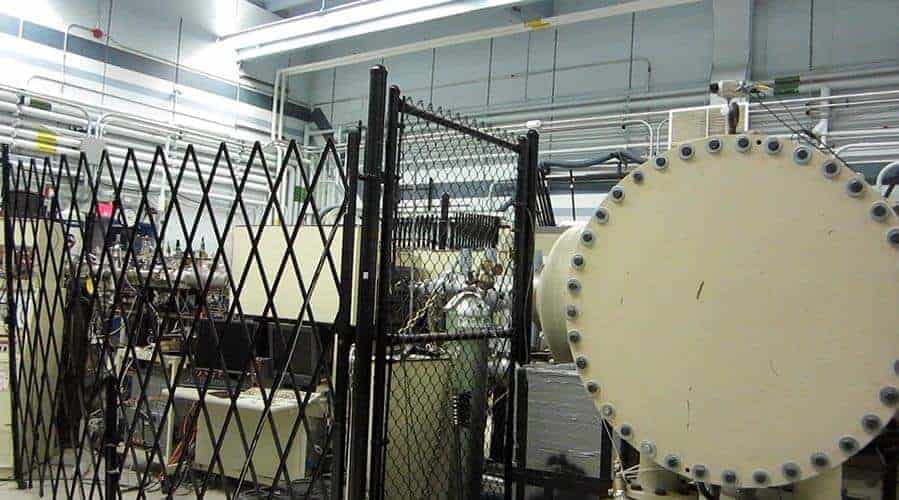A speedy way to mimic the aging of materials inside nuclear reactors has matched all aspects of the damage sustained by a real reactor component for the first time.
The method could help the U.S. and other countries stay ahead of potential problems in reactors that run for 40 years or more and also test materials for building advanced reactors.
“Compared to test reactors, ion beams are quick and cheap,” said Gary Was, the Walter J. Weber, Jr. Professor of Sustainable Energy, Environmental and Earth Systems Engineering at the University of Michigan. “They offer the opportunity to address problems on an accelerated timescale.”
The test reactors produce radiation damage faster than working power plant reactors, but they take decades to catch up with the deterioration of many operating reactors or to match the expected damage in advanced reactors.
Instead, Was and colleagues at U-M, Los Alamos National Laboratory, Idaho National Laboratory and TerraPower sought to confirm theories for reproducing the degradation seen in reactors with beams of charged atoms, or ion beams. This method takes a matter of days to produce the same amount of damage.
The goal was to replicate the deterioration seen in a metal duct that came from a sodium fast reactor, a reactor that is cooled with molten sodium rather than water. The duct, which enclosed the fuel assembly, had been in use from 1985 to 1992 in the Fast Flux Test Facility in Hanford, Wash. After it had about two decades to lose some radioactivity, researchers at Los Alamos were able to examine its microstructure for damage using sensitive techniques such as electron microscopes and atom probes.
Meanwhile, the team at U-M considered how to use ion beams to produce the kind of damage expected from seven years of neutron exposure in 440 degrees Celsius molten sodium.
“We used existing theory and prior expertise developed here over the last 25 years to zero in on the conditions that would help us achieve the same microstructure,” Was said.
Cavities had appeared in the metal, agglomerations of tiny holes formed when atoms were pushed out of place by neutrons and further aggravated when metal atoms absorbed neutrons and produced helium. The atoms displaced by neutrons could also reorganize into discs of materials distinct from original alloy.
To keep the comparison as close as possible, Was’ team acquired some of the extra metal from the batch used to make the duct. First, they used an ion beam to implant helium nuclei in the sample to simulate helium production due to neutrons. Then, they heated the material to 460 degrees Celsius and exposed it to a beam of iron ions. Since the metal was mostly iron, these ions produced the displacements without introducing new chemical elements.
The iron ions rammed into the sample with energies of 5 million electron volts (MeV).
“The amount of damage that is created with an ion is very dependent on its energy, and it turns out that the damage spectrum from 5 MeV ions is pretty close to that from fission neutrons,” Was said.
The extra 20 degrees Celsius helps to compensate for the accelerated damage rate, he added.
The iron and helium only penetrate about a micrometer, or 0.001 millimeters, into the metal, but at the atomic scale, this leaves plenty of material to probe. Electron microscope and atom probe examinations at U-M revealed that the ion beams had produced the same kinds of damage as the reactor, with defects of a similar size and number to those in the piece of duct.
While the technique will be useful for assessing problems in today’s fleet of aging reactors, the team is most interested in how ion beam irradiation can help design the next generation of reactors. These could burn up more long-lived radioactive elements, allowing spent fuel to become safe again more quickly, but this means that the reactor itself is a much more intense radiation environment. New materials are needed to withstand these tougher conditions.
This work is described in a paper titled “Emulation of reactor irradiation damage using ion beams” in the journal Scripta Materialia.
Gary Was is a professor of nuclear engineering and radiological sciences and material science and engineering.


